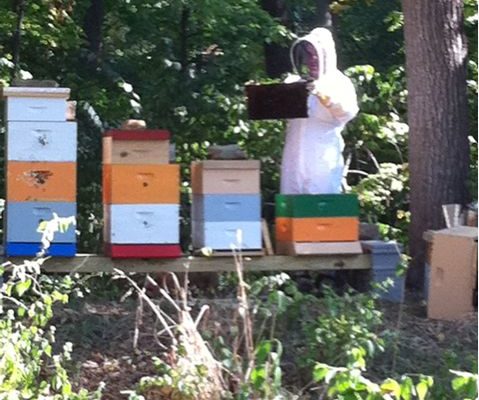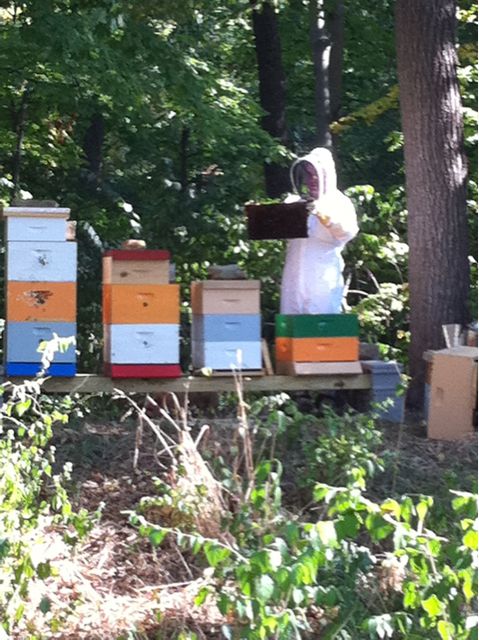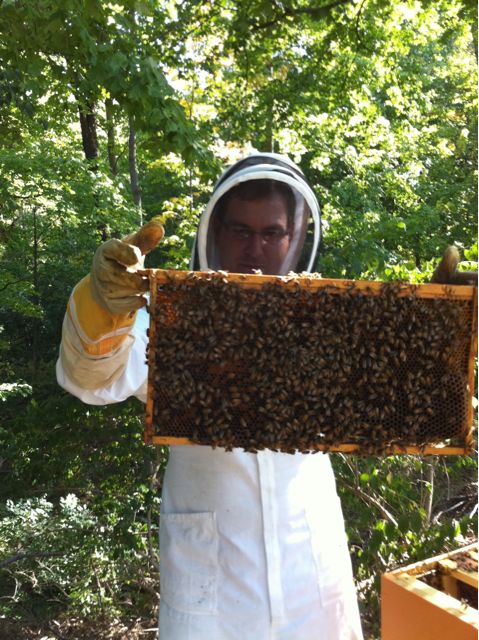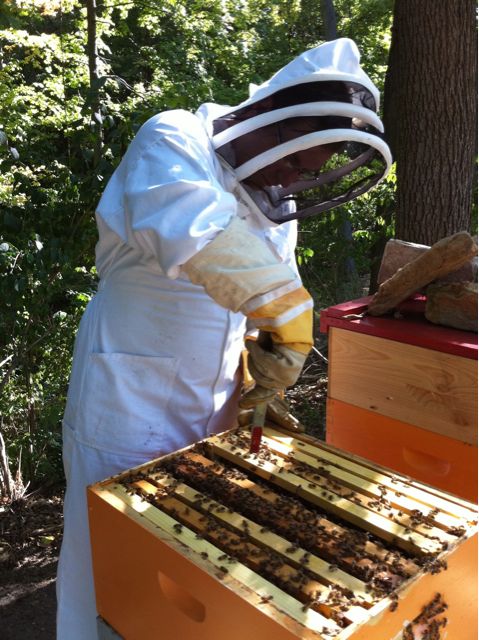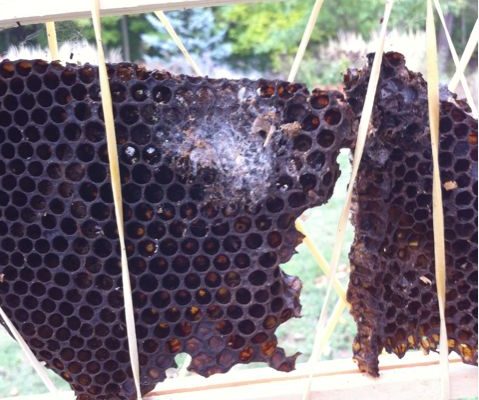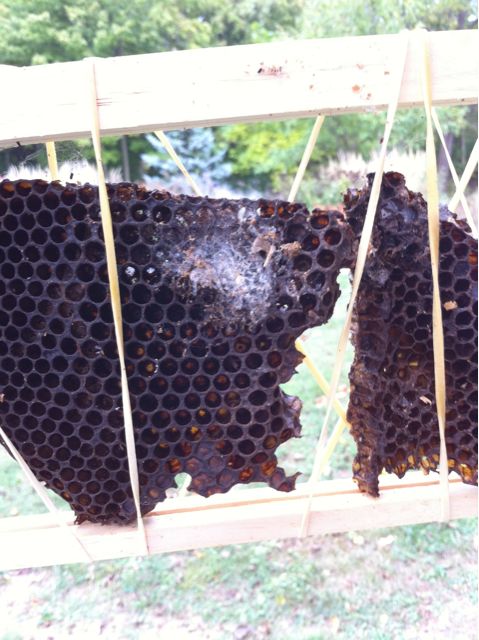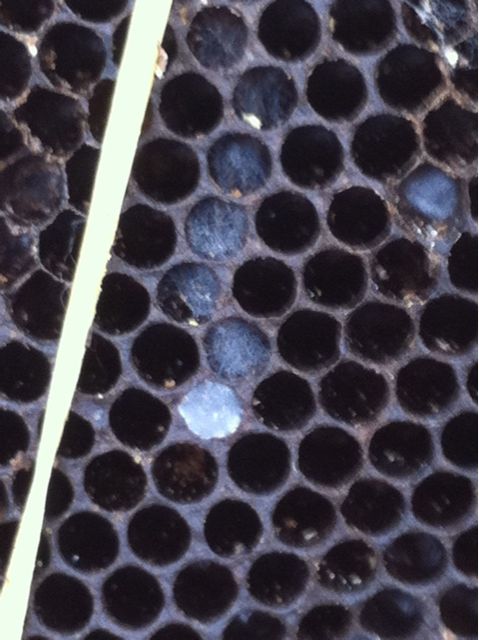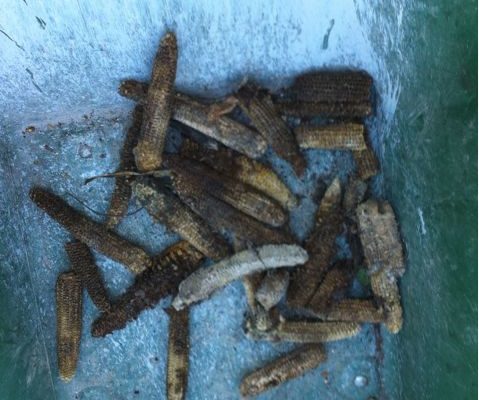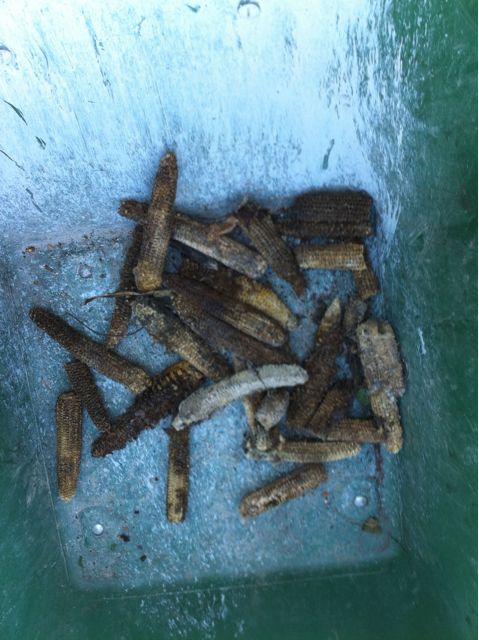It’s turned cold these past few days. By “cold,” I mean the low temperatures are in the high 30s or low 40s and the highs are in the 50s. We haven’t yet turned on the heat, but we are sleeping with the electric blanket on low.
And a few of my hives have those augur holes drilled in them. Which means I need to plug those holes so the bees can more easily regulate the temperature in there. This hole-drilling practice was something I saw done by Chris, the guy who started me beekeeping…so I did it too. I thought it was a great idea to give the bees some more air. Maybe because I like to have a lot of fresh air myself. Funny how we project our need on others, isn’t it?
But I’ve since learned that the bees don’t need me to give them air. They do better when they regulate the temperature and moisture in their own homes. It’s as if someone were to come into your home and open or close all the windows or fiddle with your thermostat. That’s just rude…and then I’d have to go around spending unnecessary time and energy readjusting your decision for me.
Anyway…it’s cold, and those augur holes need to be plugged. I want to use corks from wine bottles because they’re made from natural material. But I don’t drink alcohol, so it’s tough coming up with corks. Last year I plugged the holes with pine cones. So, if you’re sitting around drinking bottle after bottle of wine, please forward your corks my way. I need about 6 or 8 of them.

